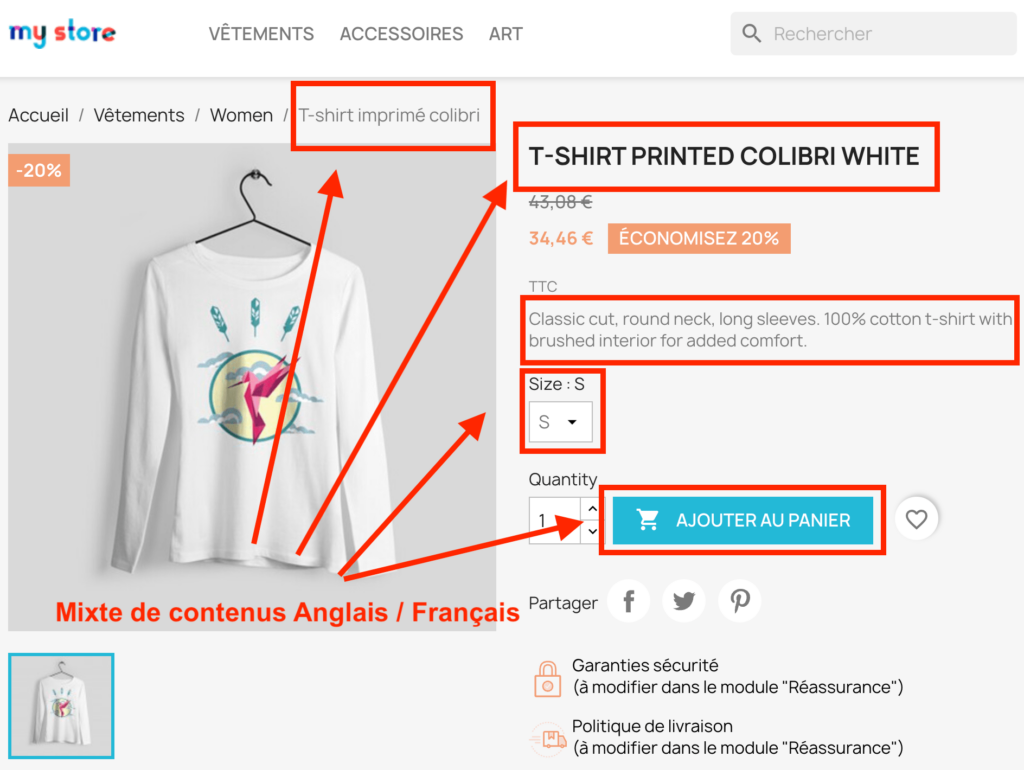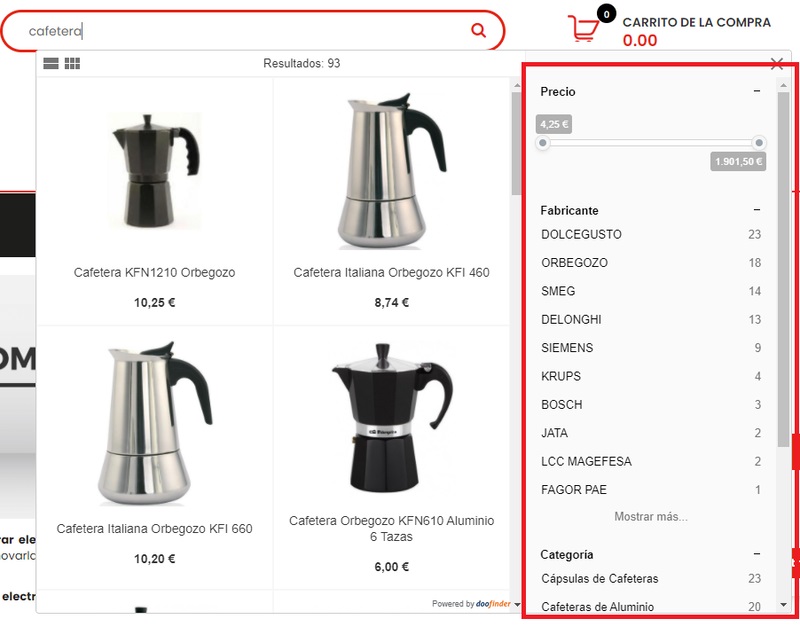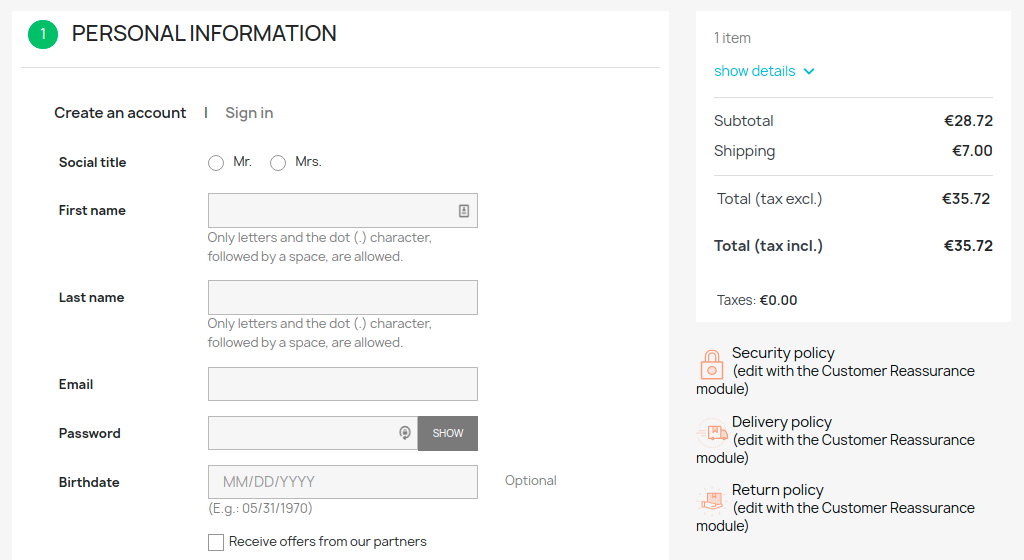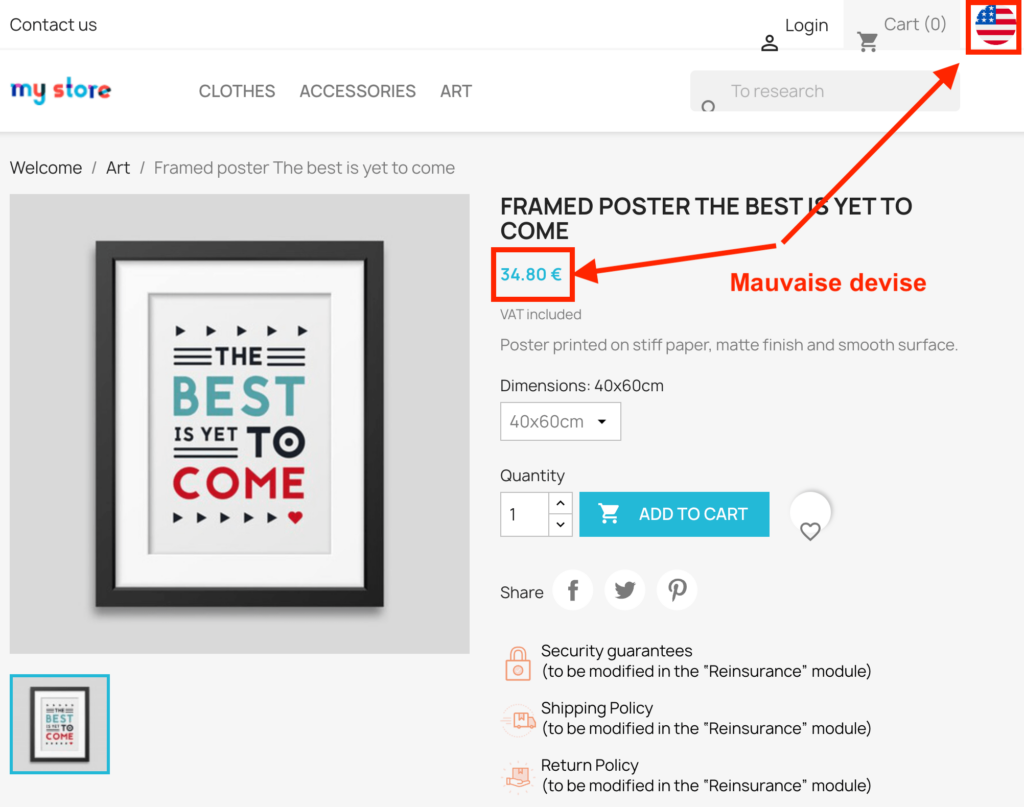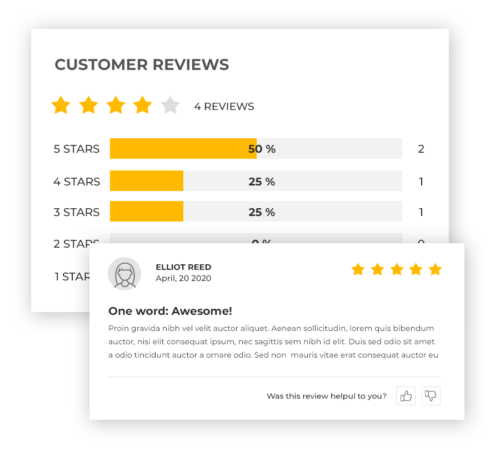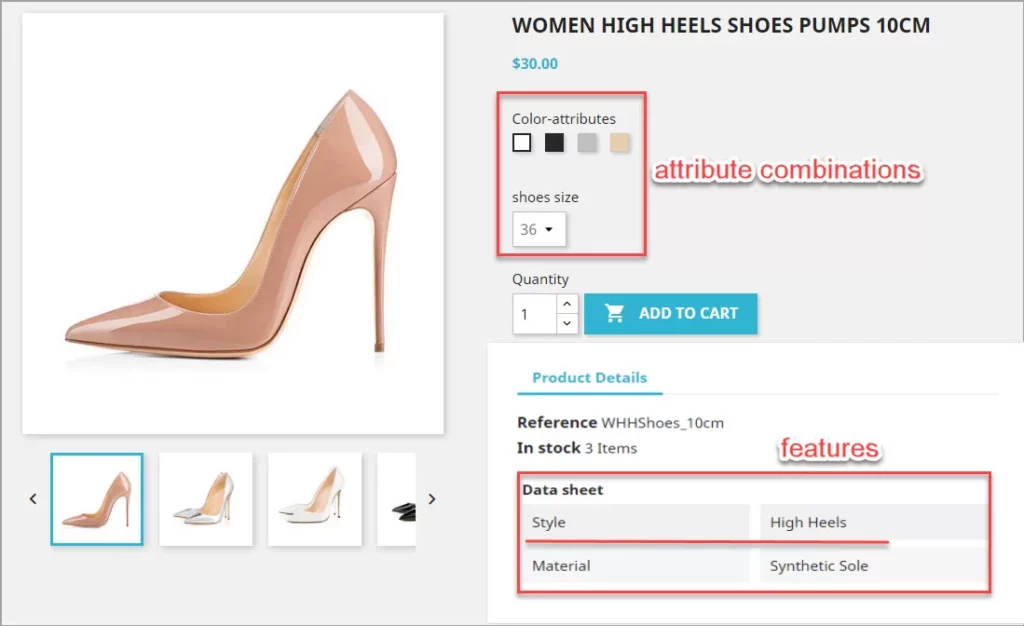10 mistakes to avoid before translating your PrestaShop
Translating your PrestaShop store is crucial for reaching an international clientele and developing your e-commerce business 🚀
However, this process can prove to be fraught with pitfalls for uninformed merchants.
In this article, we will review the ten most common mistakes to avoid when you embark on translating your PrestaShop site.
Whether you’re a beginner or an expert, these tips will help you optimize your localization strategy and offer a quality user experience to your foreign customers.Réessayer
The list of 10 mistakes:
1. Partially translating your PrestaShop
2. Using automatic translation without human revision
3. Forgetting to translate automatic emails
4. Neglecting multilingual SEO
5. Forgetting to translate dynamic content
6. Not translating images
7. Not displaying the right currencies
8. Not offering local payments
9. Ignoring the translation of customer reviews and FAQ
10. Forgetting to translate product attributes and characteristics
1. Partially translating your PrestaShop
One of the most frequent and damaging mistakes when internationalizing a PrestaShop store is partial site translation.
First, it creates an inconsistent user experience. Customers browsing your site in their native language will be confused to suddenly find content in another language.
This inconsistency can quickly frustrate them and drive them away from your store.
Moreover, partial translation can seriously undermine visitor confidence. It gives the impression that your business lacks professionalism or is not truly committed to the local market.
All of this will very negatively impact your bounce rate and degrade your SEO.
Indeed, search engines will not understand your content’s language well and therefore will not recommend it.
2. Using automatic translation without human revision
Using automatic translation is a very good thing. Fast and inexpensive, it’s ideal for translating your PrestaShop site efficiently.
However, relying solely on this method without any human revision is a mistake that can have disastrous consequences for your e-commerce.
For example, as shown in the example above, automatic translators will sometimes translate the word “Coque” (phone case) as “Shell” (seashell). This is a serious error.
Indeed, these AIs often struggle to grasp linguistic nuances, idiomatic expressions or the specific context of your business sector. This will therefore lead to a lack of confidence from your potential customers.
Beyond simple understanding, the quality of language used on your site plays a crucial role in your brand perception.
Moreover, automatic translation can have a negative impact on your SEO.
Search engines favor natural and quality content. Automatically translated text, often riddled with awkward or unnatural formulations, risks being poorly evaluated by algorithms, thus harming your online visibility.
To avoid these problems, we recommend having your content checked by humans. Ideally, use professional translators familiar with your business sector.
If your resources are limited, you can opt for a hybrid approach: use automatic translation as a base, but have it systematically reviewed by someone competent in the target language.
3. Forgetting to translate automatic emails
A frequent but often overlooked mistake in the PrestaShop site translation process is forgetting automatic emails.
When these emails are not translated, it creates a break in the user experience.
Imagine a customer who browses your site entirely translated into their language, places an order, then receives a confirmation email in a language they don’t understand.
This inconsistency can generate confusion, frustration, or even concern about the transaction’s legitimacy.
For example, poorly understood return instructions can lead to logistical complications, while an invoice in the wrong language can cause administrative problems for your business customers.
The absence of automatic email translation can also harm your marketing efforts. Abandoned cart recovery campaigns or promotional newsletters lose considerable effectiveness if they are not in the recipient’s language.
4. Neglecting multilingual SEO
Multilingual SEO is crucial for your PrestaShop store’s visibility internationally.
Neglecting this aspect can seriously compromise your online presence in foreign markets.
Here are the key points not to neglect:
Keywords: Conduct market-specific keyword research. Popular terms can vary considerably from one language to another.
Meta tags: Adapt your titles and descriptions for each language, taking into account local search specificities.
Hreflang tags: Implement them correctly to indicate to search engines which language version to display based on the user’s language or region.
URL structure: Organize your URLs consistently for each language version (e.g. subdomains or folders).
Localized content: Go beyond simple translation. Adapt your content to the cultural specificities of each market.
Local backlinks: Obtain quality backlinks from sites in the target language to strengthen your local authority.
Loading speed: Optimize your site’s speed for all targeted countries, using CDNs if necessary.
Images: Translate alt attributes and captions, and use culturally relevant visuals.
By giving necessary attention to these multilingual SEO aspects, you will significantly increase your PrestaShop store’s visibility on each of your target markets.
5. Forgetting to translate dynamic content
Dynamic content is often overlooked when translating a PrestaShop site, creating an inconsistent and potentially frustrating user experience.
An untranslated error message can confuse the user and prevent them from solving the problem, potentially leading to abandonment of the visit or purchase.
Pop-ups and notifications also play a crucial role in engagement and conversion.
Contextual windows concerning promotions, cookie policies, or stock notifications must be perfectly understandable for your international visitors.
Product filters and sorting options are essential for user navigation and search.
Their translation allows customers to easily find what they’re looking for, thus improving their shopping experience.
Particular attention must be paid to the cart and order process.
Every step, from shipping options to payment methods to confirmations, must be perfectly translated to reassure the buyer and facilitate order completion.
The good news is that PrestaShop has already done much of the work for you by pre-translating the entire conversion funnel.
Placeholders in form fields also deserve your attention.
Finally, confirmation messages after an action (thank you page, newsletter subscription, etc.) are important to reassure the user about the success of their interactions with your site.
To avoid these oversights, conduct a complete review of your site by putting yourself in a user’s shoes.
Browse, perform actions and check every interaction.
6. Not translating images
When we talk about image translation, it’s not just about modifying visible text on visuals.
This also encompasses adapting textual elements integrated into images, localizing visuals so they resonate with the target audience, and optimizing textual attributes associated with images.
Promotional banners are particularly important. If your homepage displays a banner with French text for your English-speaking customers, you lose a valuable opportunity to engage them upon their arrival on your site.
These visual elements are often the first to attract visitors’ attention and can play a decisive role in their decision to continue browsing or leave the site.
Product images containing text, such as labels or descriptions, must also be adapted.
Beyond visible text, it’s crucial to localize alt and title attributes of images.
In some cases, it may be wise to choose different visuals for each market, to better reflect local cultural and aesthetic preferences.
7. Not displaying the right currencies
Displaying prices in local currency is much more than just a convenience for your international customers. It’s a crucial element of their shopping experience and your conversion strategy.
When a customer visits your PrestaShop store and sees prices displayed in a foreign currency, it immediately creates a psychological barrier.
They find themselves forced to make mental conversions to understand the real value of products, which can be a source of frustration and uncertainty.
This additional friction in the purchasing process can significantly reduce your conversion rates.
Customers might wonder if you really deliver to their country or if your site is truly adapted to their market.
Your PrestaShop site should ideally detect the visitor’s location and automatically display prices in the appropriate currency.
Make sure currency conversion is accurate and updated regularly.
Don’t forget to adapt all price-related elements: shipping costs, taxes, discounts and payment options must all be consistent with the displayed currency.
8. Not offering local payments
Not offering familiar and preferred payment options in each market can seriously hinder your sales and customer confidence.
Each country has its own online payment habits. While international credit cards are widely accepted, they are not always the preferred or most accessible payment method in all markets.
For example, in Germany, many consumers prefer direct bank transfer or solutions like Sofort.
In the Netherlands, iDEAL is essential. In China, Alipay and WeChat Pay dominate the market.
Ignoring these local preferences can have direct consequences on your conversion rates.
A customer who doesn’t find their usual payment method may hesitate to finalize their purchase, or even abandon it completely.
Moreover, offering local payment methods strengthens your store’s credibility. It shows that you understand and respect your international customers’ habits, which can significantly increase trust and brand loyalty.
Implementing local payment methods may seem complex, but PrestaShop fortunately offers many extensions and modules to facilitate this integration.
Investing in these solutions and in customizing your payment process for each market can have a significant return on investment.
Don’t forget to also adapt your communication around payments.
9. Ignoring the translation of customer reviews and FAQ
The translation of customer reviews and FAQ is often forgotten during PrestaShop site internationalization.
Yet, they play a crucial role in the purchase decision process and in building customer confidence.
A French-speaking customer visiting the English version of your site cannot fully benefit from experience feedback if it’s only in English.
Similarly, the FAQ section is often the first place where customers look for answers to their questions. If this information is not available in their language, it can generate frustration and uncertainty, potentially leading to purchase abandonment.
For the FAQ, consider creating market-specific versions rather than simply translating the original version.
10. Forgetting to translate product attributes and characteristics
The translation of product attributes and characteristics is generally underestimated.
These elements are essential for helping customers make informed purchase decisions, and neglecting them can seriously compromise user experience and sales.
Product attributes and characteristics, such as size, color, material or customization options, are critical information for buyers.
For example, a French customer confronted with clothing sizes in American notation (S, M, L) without metric equivalence could be disoriented and give up their purchase.
Measurement units may need to be converted (inches to centimeters, pounds to kilograms), and some characteristics may have different importance depending on the markets.
Don’t forget search and navigation filters. If your translated attributes don’t match filtering options, customers will have trouble finding the products they’re looking for, which can lead to frustration and missed sales.
Reversia, the solution you need to translate your PrestaShop!
You understand, internationalizing a PrestaShop store is a complex process where every detail counts.
With Reversia, you have a complete solution that addresses each of these potential errors.
By choosing Reversia, you ensure successful international expansion and optimal customer experience across all your target markets.
Translate and launch your store internationally with Reversia!Réessayer


